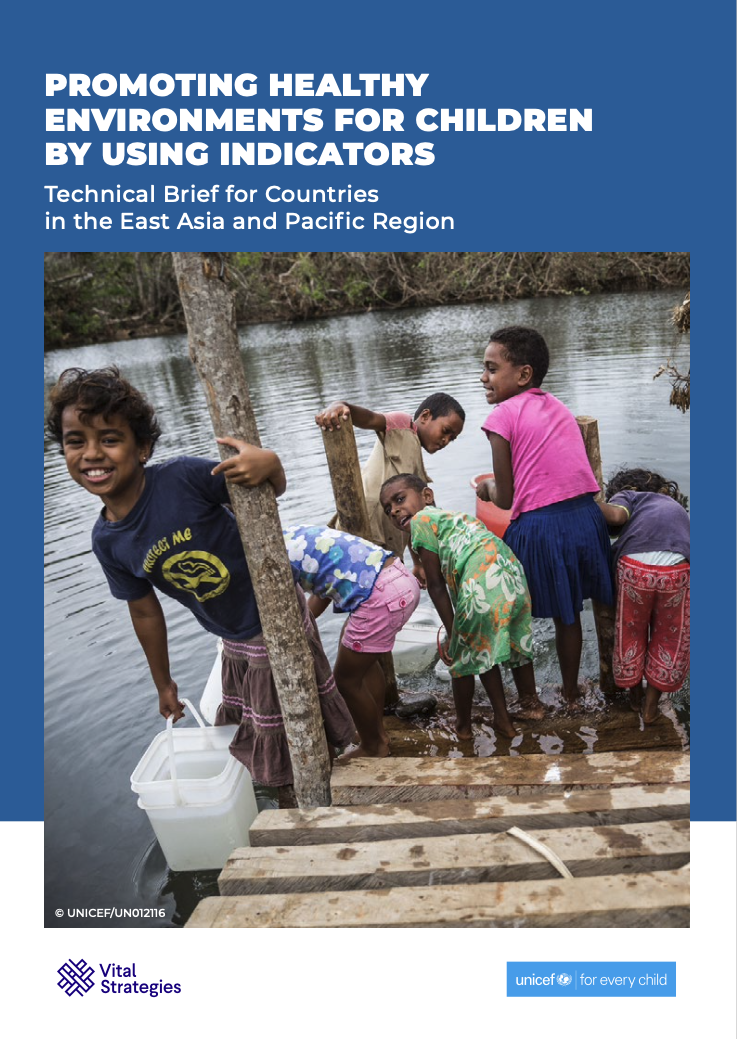A Technical Brief for Countries in the East Asia and Pacific Region
Unhealthy environments have been linked to a range of significant health risks to children, including premature birth, stillbirth, increased lifelong risk for brain and behavioral problems, respiratory disorders, cardiovascular disease, cancers, dysfunction of hormonal and reproductive systems, and more. Globally, more than 1 in 4 childhood deaths under 5 years of age are attributable to unhealthy environments—a statistic that will continue to rise as climate change magnifies the world’s most important environmental risk factors.
While environmental health risk factors are clearly leading causes of child illness and death in Asia, country-specific, systematic data needed to develop approaches to improving children’s health and reducing, minimizing, and preventing environmental risk factors is often lacking. Children’s Environmental Health Indicators (CEHI) can fill the data and knowledge gap in children’s environmental health. CEHIs can enable tracking, assessment and reporting on the status and impacts of the climate and the environment on children’s health as well as the evaluation of environmental interventions and policies.
In line with the pilot implementation of CEHIs in China and Myanmar, Vital Strategies in partnership with UNICEF has developed a technical brief ‘Promoting Healthy Environments for Children by Using Indicators’ to support governments, academia, and civil society in developing a tracking system for children’s environmental health indicators in their own countries. The brief was developed in tandem with our pilot development of CEHIs in China and Myanmar.
Recent Abstracts
Information About New Federal Regulations for Opioid Treatment Programs (OTPs)
Centering Country Ownership and Leadership: The Data for Health Initiative’s Approach
Mass Media Campaigns
Data for Health: Advancing Gender Equity
The Index of Tobacco Control Sustainability
Index of Tobacco Control Sustainability (ITCS): India Subnational Tobacco Control
Index of Tobacco Control Sustainability (ITCS): Indonesia Subnational Tobacco Control
Considerations for Planning Childhood Blood Lead Surveillance
Air Quality Monitoring Toolkit: Assessing Second-Hand Smoke in Hospitality Venues
Association between high-threshold practices and buprenorphine treatment termination
